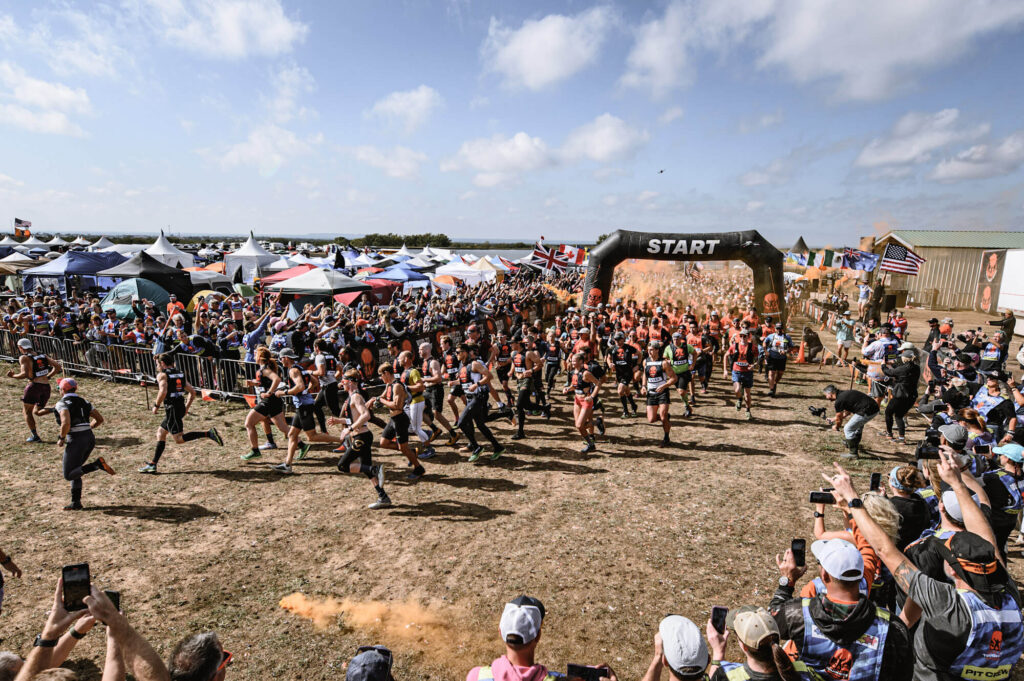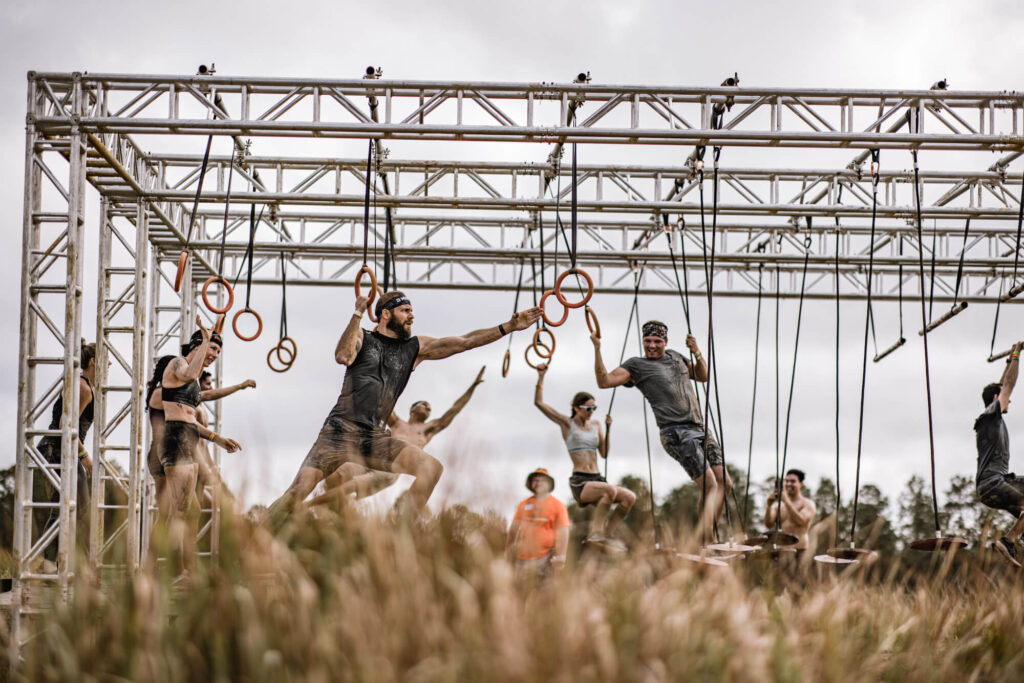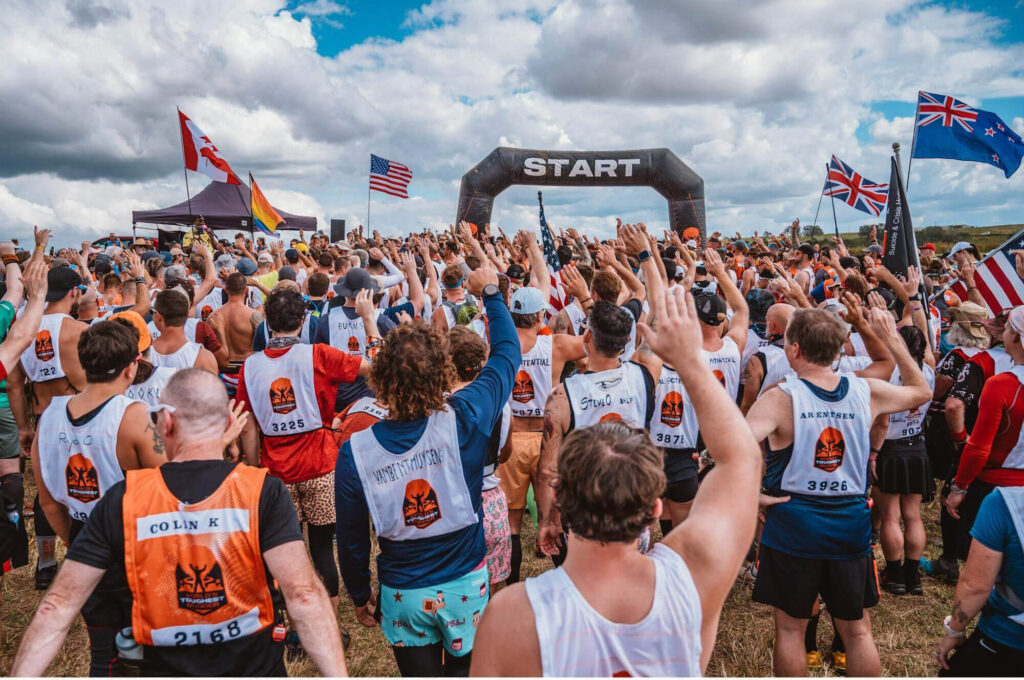Ready to push your limits and improve your Tough Mudder performance? Add HIIT workouts to your training routine.
WHAT IS HIIT?
High intensity interval training (HIIT) is a form of training that uses repeated high-intensity exercise bouts interspersed with brief recovery, or rest, periods. Work periods during HIIT, at least in studies, generally include bodyweight exercises, running, and cycling. Work-to-rest ratios vary depending on fitness level, but beginners should start with a 1:1 work to rest ratio and more advanced Mudders should try a 2:1 or 3:1 work to rest ratio. For example, this means aspiring Mudders would work for 30 seconds and rest 30 seconds whereas competitive Mudders would work 40 seconds and rest 20 seconds.
As for exercises to do, start with bodyweight moves like squats, lunges, push ups, inverted rows, and bear crawls. Intermediate Mudders can incorporate sandbags, dumbbells and medicine balls. Using an Olympic barbell (45 pounds) with or without weight adds the ultimate challenge for HIIT workouts. But lifting a heavy bar for time can cause injury if performed with improper form, so consult a fitness professional prior to barbell training in a fast-paced manner.
And now that you know what HIIT is, here’s why you should do it:
The Benefits of HIIT
IMPROVED ENDURANCE PERFORMANCE
Endurance athletes can improve their performance via HIIT, according to a 2013 Sports Medicine review. But just how intense does your HIIT workout need to be to improve endurance performance? Essentially, the review found that around 80-85% of maximal oxygen uptake, which is around 80-85% of maximum heart rate, is best for improving aerobic performance. Too high of an intensity can actually be detrimental to endurance performance.
FAT LOSS
Exercising at a high intensity results in maximal calorie burn in minimal time. If you have 60-90 minutes to run (outdoors or on a treadmill) or ride a bike, go for it. You’ll burn a lot of calories that way, possibly even just as many as a HIIT workout. But with HIIT you can cut that workout time in half and burn hundreds of calories, too. The thing with HIIT is that you can add on different types of fitness disciplines to accompany your HIIT or vary the frequency of HIIT to make it more effective.
A 2016 Applied Physiology, Nutrition & Metabolism study compared the effects of a HIIT regimen alone and a HIIT regiment that included a pre-workout plyometrics routine. Obese female adolescents did either 12 weeks of HIIT running on an outdoor track or that same workout preceded by double-leg jumps, medicine ball throws and hurdle hops. Turns out the jumping+HIIT group had less blood sugar, a higher squat jump, and more lean body mass compared to the HIIT-only women. More lean body mass = less body fat.
HIIT IS MORE FUN
Think exercising at such a high heart rate will suck? Think again. Research says it’s actually more fun than keeping a low heart rate.
A recent PLOS ONE study involving two different groups of participants found that five weeks of either HIIT or moderate intensity cardio resulted in similar losses in body fat and total body weight and similar improvements in VO2max. (The high intensity workout called for 8 seconds of cycling followed by 12 seconds of rest for 20 minutes while the moderate intensity cyclers worked at 60-80% of VO2max for 40 minutes.) But when both groups filled out the Physical Activity Enjoyment Scale (PACES) questionnaire to determine how much they liked the workout techniques—the HIIT group had significantly higher enjoyment than the steady state cardio group.
Another study PLOS ONE study also found that HIIT is more enjoyable that steady state—but this time, the workouts got increasingly harder throughout the study. And surprisingly, as the workouts got harder, the study participants enjoyed them more. In that study, the people did six weeks of either HIIT (90-95% maximum heart rate) or moderate intensity training (70-75% of maximum heart rate). By week four, most people enjoyed HIIT more. By week five, HIIT was significantly more enjoyable than moderate intensity workouts. The moderate exercises started to dislike the workouts over time whereas the HIIT athletes increased their enjoyment as they neared week six. There is a psychological benefit to continuously achieving tasks that are hard.
How Often Should You Do HIIT?
According to a recent International Journal of Sports Medicine study, the best answer is: 3 times per week. Study participants were divided into three groups: one that did HIIT training twice per week, another that did HIIT training three times per week and the control group didn’t do any training. During the eight-week study, the HIIT groups did 10 rounds of 60 seconds of cycling at 83% of VO2max interspersed with 60 seconds of low intensity cycling. While all exercisers significantly improved their VO2max, decreased waist circumference, and got leaner legs compared to the control, there were additional benefits for those who added the third workout: HIIT training three times a week caused less body and belly fat in addition to a decrease in total and LDL cholesterol compared to training twice a week.
Between getting better at running, losing body fat, saving time and being happier, there are few reasons not to incorporate high intensity workouts into your routine. The mental grit you develop while pushing yourself during HIIT classes or workouts will show itself while conquering any Tough Mudder course.
Want to keep your training going? Find a Tough Mudder Bootcamp near you.




